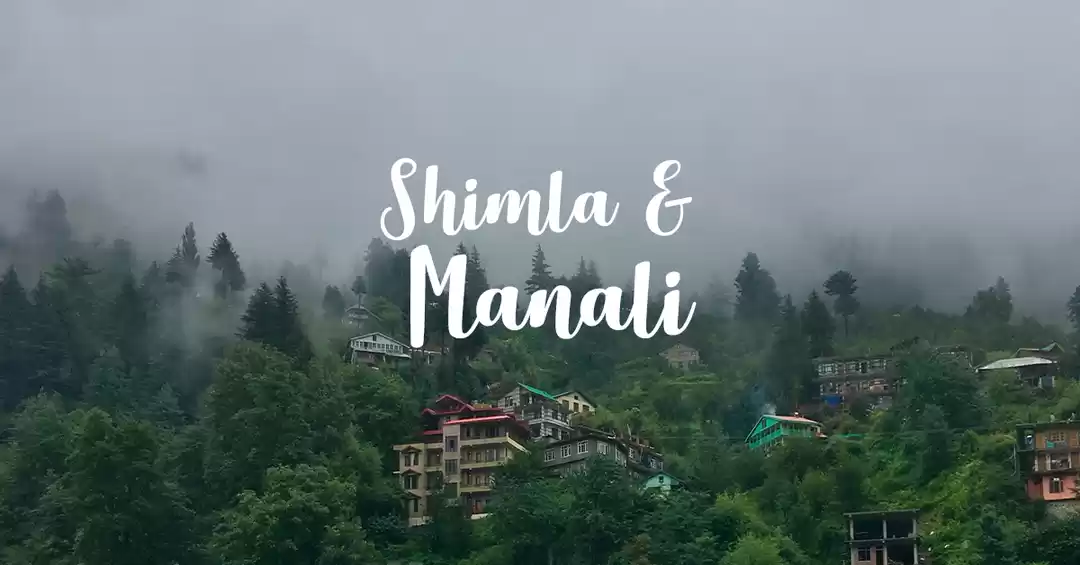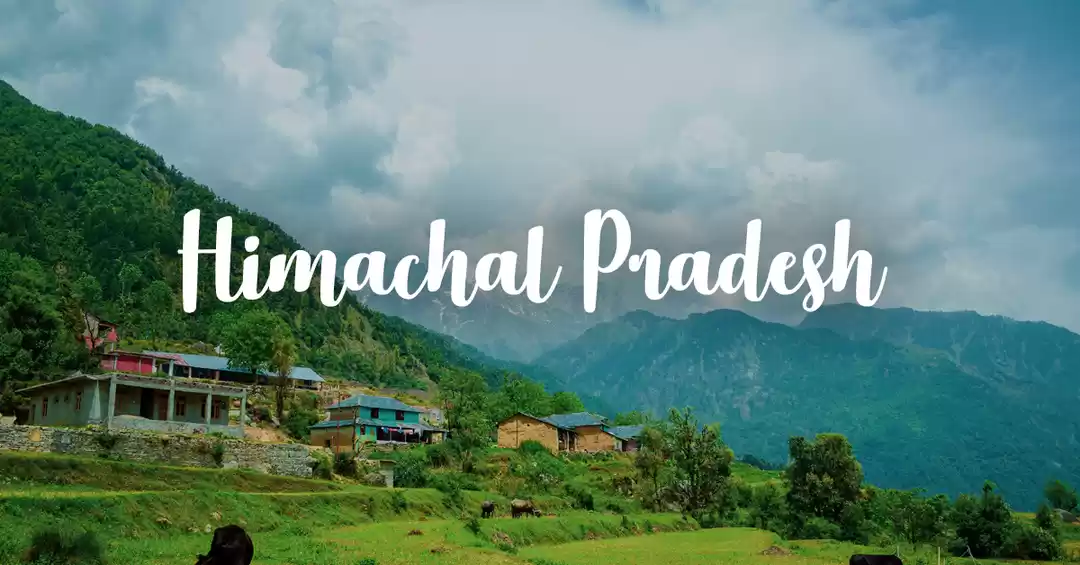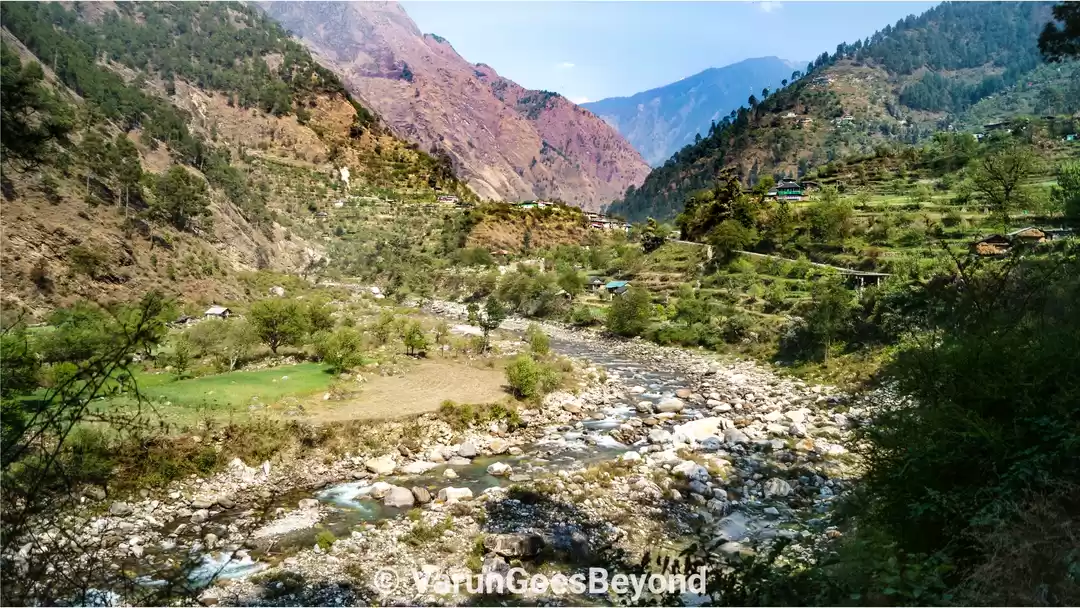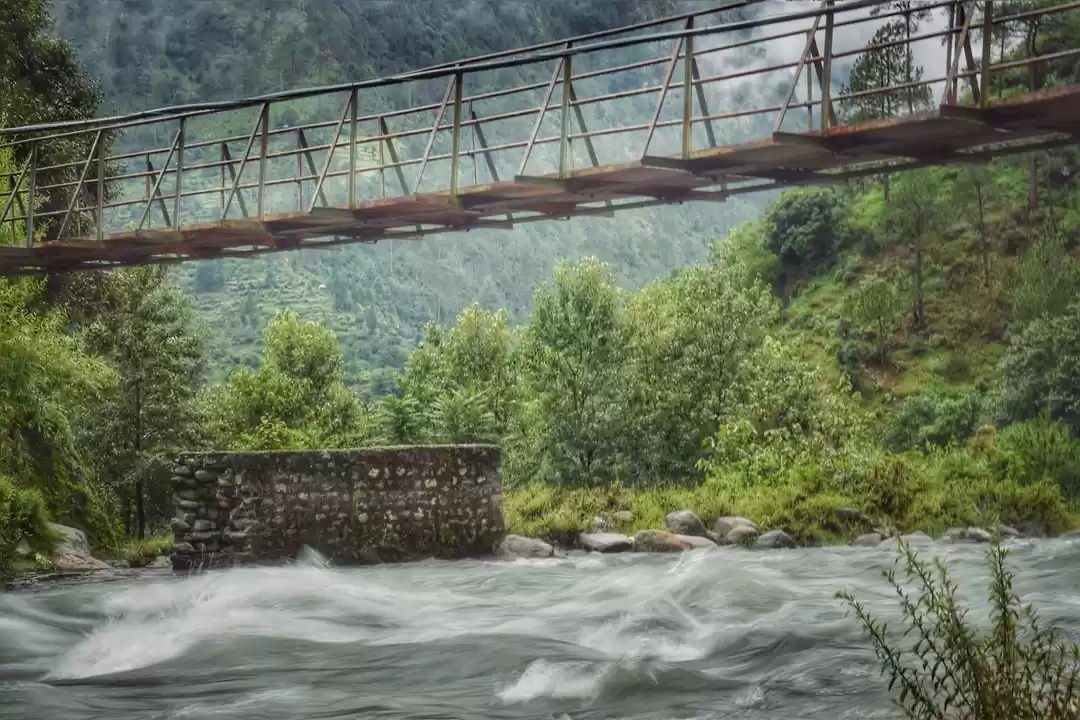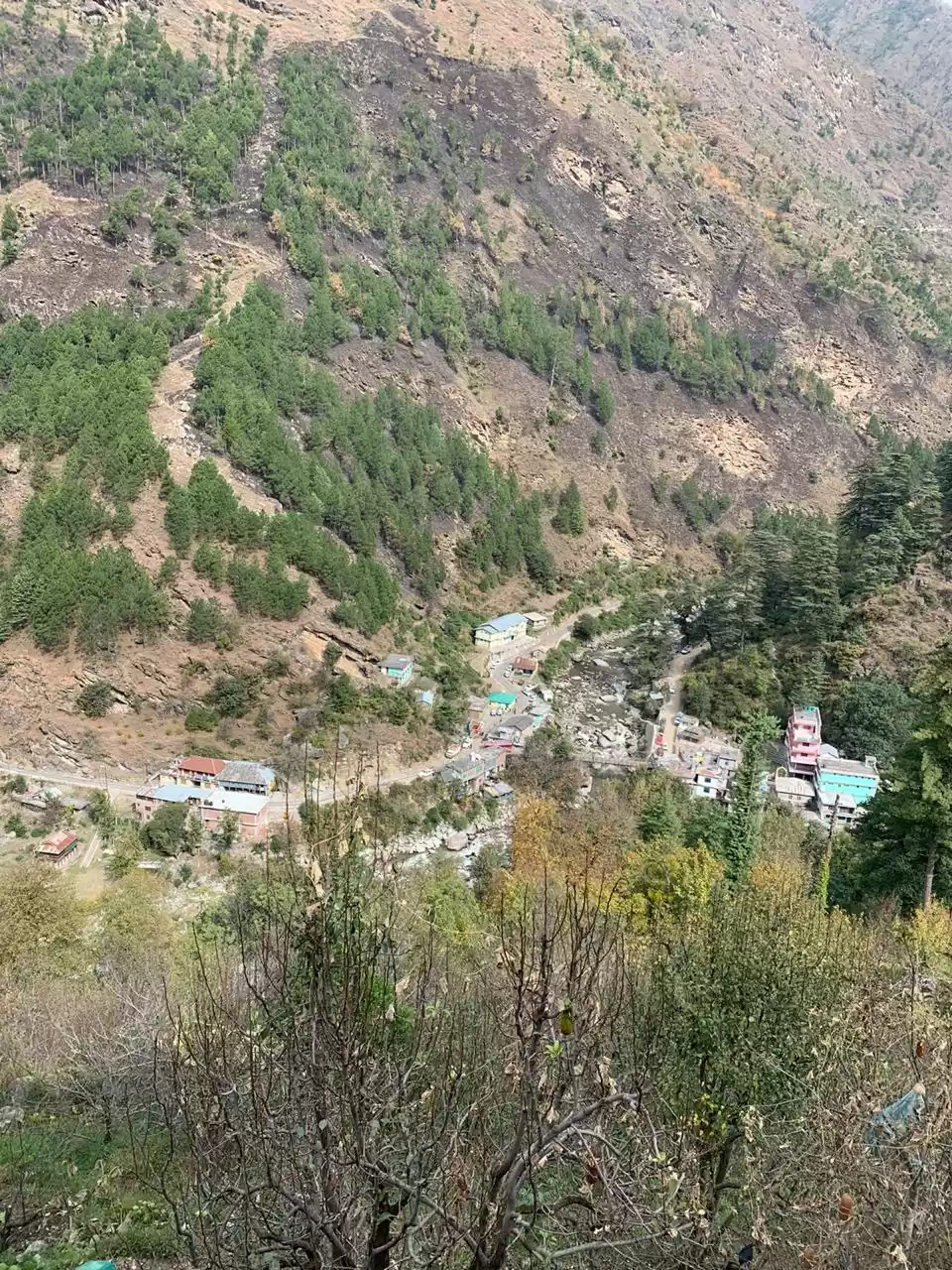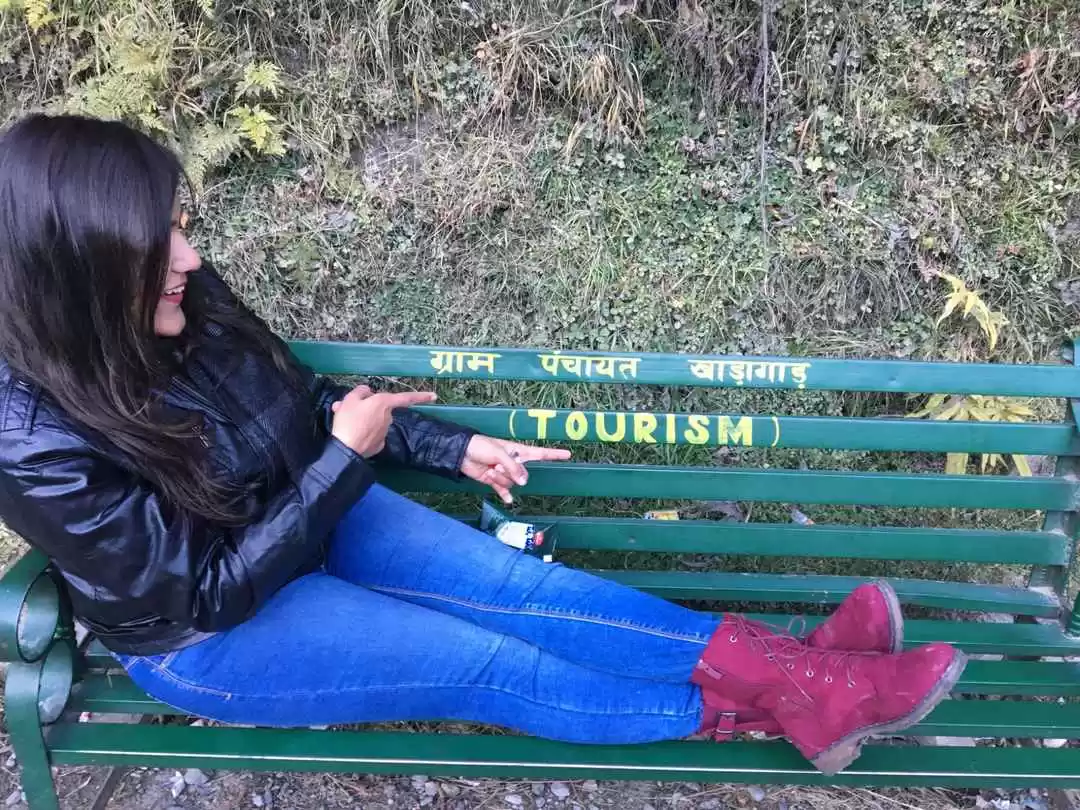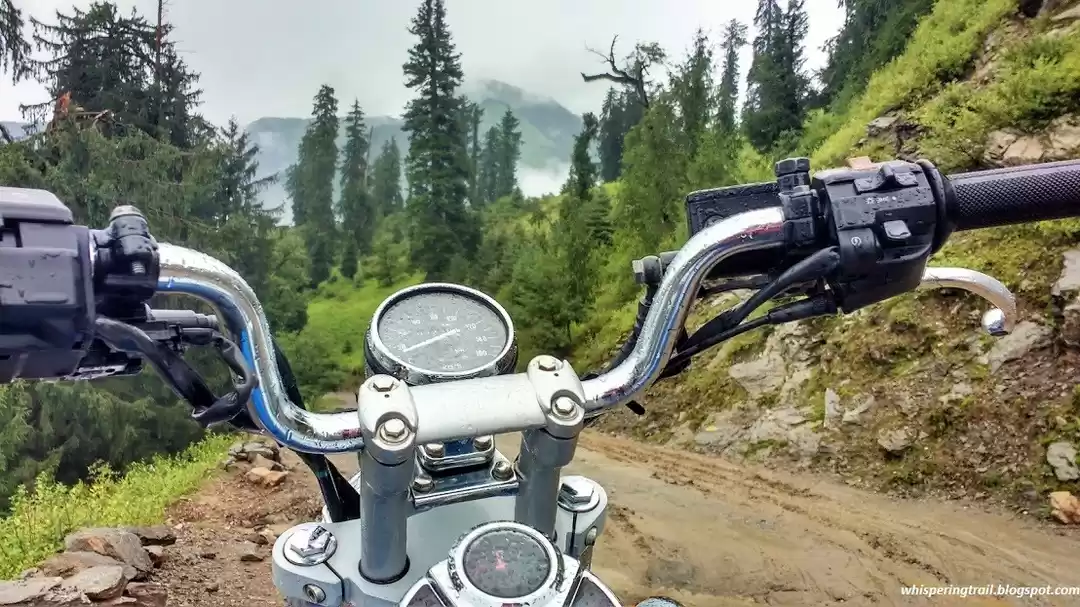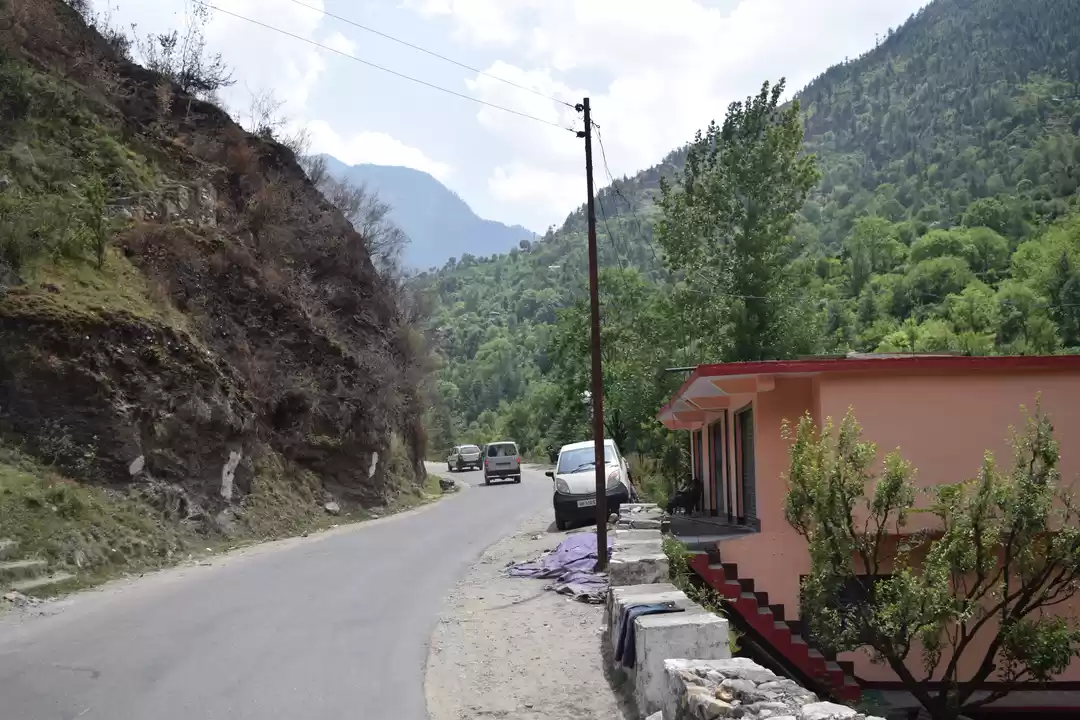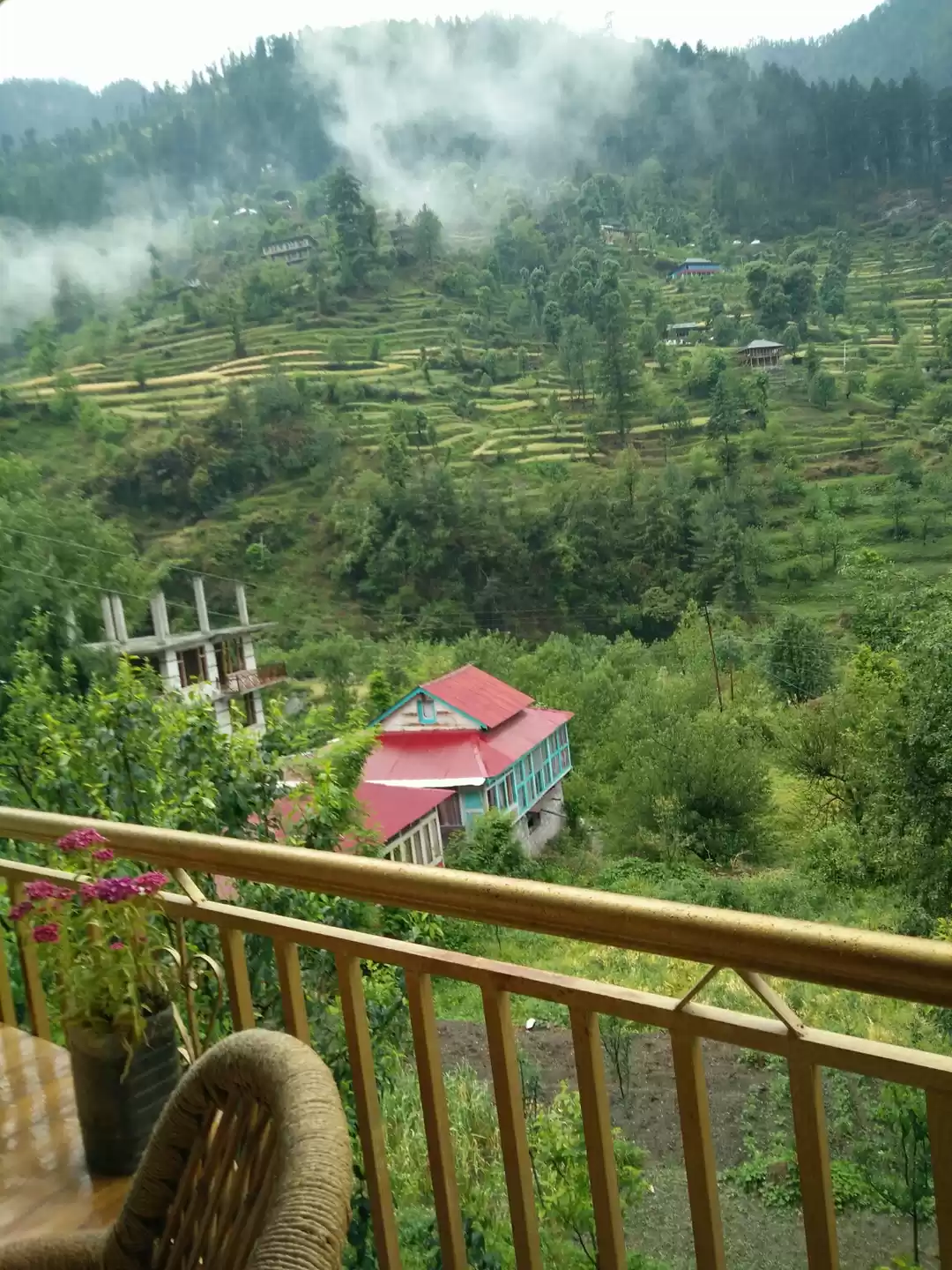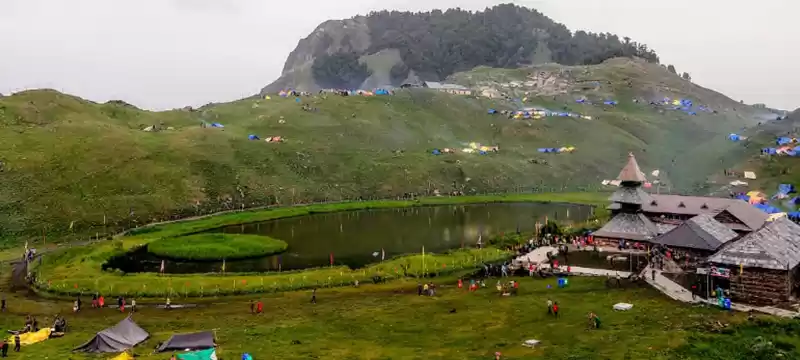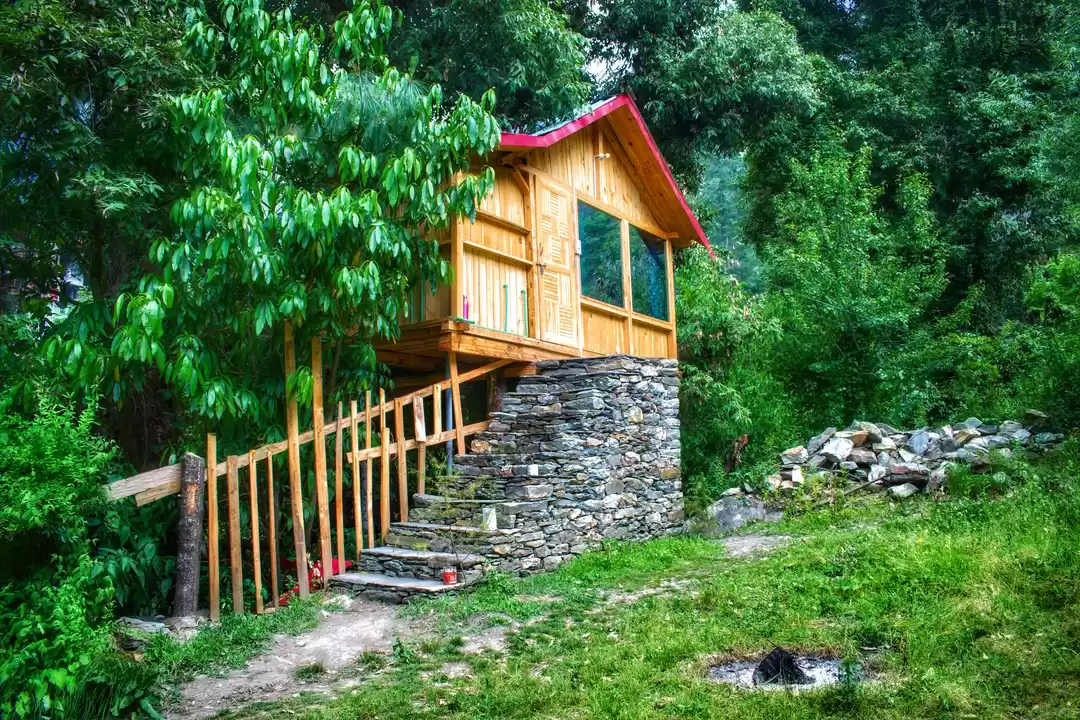

Sometimes you come across the best when you are not looking for it.
I took a bus from Dharamshala meaning to go to Bir, but instead decide to continue my journey on till Jibhi in Tirthan Valley. I looked up online on how to reach Jibhi but since nothing came up, I relied on the knowledge of the locals to find my way.
I went in the end of November, which is the start of winter and the end of autumn, and hence, I still got to see the valley in its autumn colours. Specs of yellow and orange trees lining the river Beas as it flows from the mountains high up, the drive across the valley is a sight that will take your breath away. Every side of the road has its own views, whether it's the valley down below or the lush mountains rising up.
When I finally reached Village Ghiaghi in Jibhi, it was late evening and I was welcomed with deodar smoke, smell of food being cooked out in the open and the sound of a gushing river. The wind was chilly and I was tired after a whole day of traveling in local buses without even having had a proper meal, but nothing in the world could stop me from heading to the bonfire. It was a handful of people, some cutting logs for the firewood, some of them cooking and one of them on the guitar. The night was perfect as we sat under the bright moon and the river hardly 10 steps ahead. Time passed by with each of us sharing stories, blankets, rum and plates of food.
I wake up the next morning, step out of my balcony for a quick view of the place. The fresh air I breathed reminded me of my time in Gurez, pristine and unpolluted. Even the dust in the mountains make you glow! I woke up to a huge deodar right outside my window and the glistening river just behind it. There was no denying we went for a small hike over the river to one of the natural Jacuzzis, but only to sit by the rocks and admire the myriad colours as the water was close to freezing. Trust me, no amount of photos can do justice to the sight you see with your naked eye.
Days are short here and as soon as the sun starts to set, the cold wave starts sweeping in. The beauty of a mountain sunset is that even if there is no spec of sunlight in the place where you are, some far off mountain peak will be glistening a fiery orange shade. By 6, everything goes dark, and by 7, the village life comes to a stop. By 7:30, the stars are out and if lucky, you can see the milky way filling up the night sky.
How to reach Jibhi
If you have you own vehicle, then you will surely GPS your way till here. But for someone traveling solo and relying on public transport, here is how to reach Jibhi using HRTC buses:
Irrespective of where you are traveling from, take a bus till Mandi. If you are traveling from Shimla, change buses in Rampur. From Mandi, board a bus that will drop you at Aut, right beside the tunnel. If you are traveling from Manali side, take a Mandi bound bus and drop off at Aut or Bhuntar. From Aut/Bhuntar, board a bus or shared taxi headed towards Banjar. The last bus reaches Banjar around 6:30pm, and the last bus from Banjar towards Jibhi leaves around 3:45pm everyday. Hence, time yourself accordingly. From Rampur, take the bus towards Aut/Mandi. This route passes via the Jalori Pass, so if you time yourself well, you could halt at Jalori Pass and then continue your journey towards Jibhi. The last bus passes around 3:30pm. The journey from Mandi to Banjar takes about 4 hours, and from Manali to Banjar will be anywhere between 3.5-4 hours. Its important to keep an hour or two as buffer when taking public transport, and also because mountain roads can be unpredictable. Incase you reach Banjar late and want to continue till Jibhi on the same day, you can always hire a private taxi but the cost of the same will be high. These timings are my mere observation over the 5 days I spent here. However, please confirm at the station as timings may change depending on the season.
The nearest airport to Tirthan Valley would be Kullu, but many prefer to take a flight till Chandigarh and then drive or ride down. You could also take a flight till Shimla (for a spectacular landing view), and then continue your journey towards Jibhi.
Where to stay in Jibhi
Now that you have a fair idea on the ways how to reach Jibhi, the next would surely be the uncertainty of whether to find decent places to stay or not. There are many homestays coming up in Tirthan Valley, but don't expect a luxury life here. The whole reason one travels to such remote places is to live in the simplicity of the locals and to soak in the beauty of the raw nature.
I stayed in Treesouls hostel in Ghiaghi. It's a quaint home by the river about 10 minutes from the main Ghiaghi village bus stop. The rooms are the cheapest in the whole of the valley, the owner, Johnson, sees to it that you are comfortable, and will also indulge you in the daily activities of the place making you feel like you are home. The terrace makes for one of the best sunbath spots in the valley, and the many Jacuzzi in the vicinity of the property make this place a winner for me. The rooms are spacious and well ventilated with wooden interiors and comes with attached bathrooms, there is solar powered heating and lighting system, and the common kitchen is free for anyone to use.
What to do in Jibhi
The best thing to do in a valley so pristine is to relax with a cup of coffee or tea in hand. However, the Jibhi waterfalls is one place you could go to, and the Serolsar lake trek is another activity many adventurers indulge in. It's a fairly easy trek that leads up to the lake, the water of which is said to have medicinal properties. It is dedicated to the mother of all Nags, Budhi Nagin, with a temple located right next to it.
There is also a Fort called the Chehni Kothi which is in a tower structure, built around the 17th century made of wood and stone.
Best time to visit Jibhi
Every season has its own wonder in this valley but if you are someone who likes to explore the flora and fauna, take dips in the river, and cannot bear the biting cold of the extreme winters, then spring is the best time to visit (March - June). The valley is blooming with beautiful flowers and apple orchards during spring.
Summer leads to monsoon very quickly and like in all of Himachal, monsoon can be a tricky and risky time to travel.
Autumn/winter on the other hand is considered off-season with less influx of tourists and more of adventure seekers.
All in all, Jibhi is soon catching up to be the new offbeat destination of travelers in India. The little insight above on how to reach Jibhi should now convince all of you, including the solo female travelers, to head out here for your next stopover.










